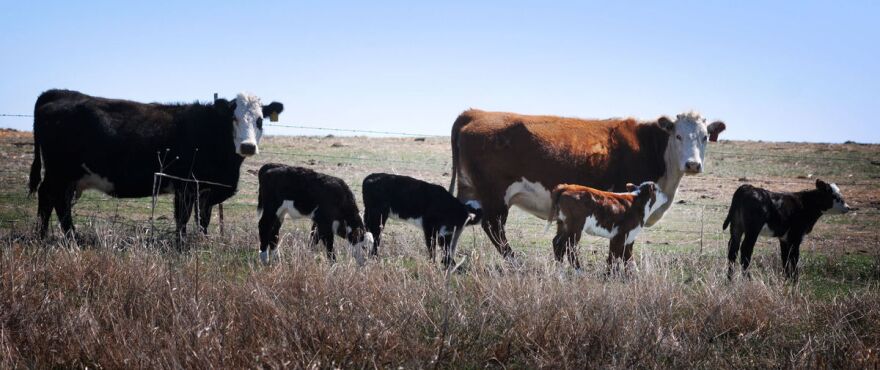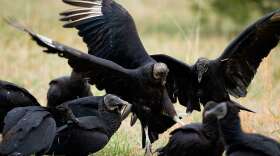Diversification to manage risk has returned as an overriding theme in the cattle industry, as faltering farm economics force producers to re-acclimate to leaner times.
Two regional cattlemen who bootstrapped their way to success — without a farm to inherit — talked about how they diversified their profit centers during the Tri-State Cow-Calf Symposium in Goodland, hosted by Colorado State University, Kansas State University and the University of Nebraska.
Following some rare boom times in agriculture, today's economics make getting started in farming, or returning home to farm, a daunting prospect.
For Gary Teague, the same business diversification that allowed him to firmly establish his place in the agriculture industry is now creating opportunities for his three children to return after college.
Teague began building his cattle feeding operation while he was still in graduate school at CSU. He and his family have since diversified into multiple farm and ranch related enterprises in the Fort Morgan area.
As they added new business segments, each was required to stand on its own.
"It has to be profitable. I'm not going to subsidize it," he said.
That starts from the very beginning, with how he handles his grain production. He doesn't merely aim to add value by putting it through a cow.
"As a feedlot operator, I want to buy corn when it's the cheapest. If I'm a corn farmer, I want to sell it at the highest. So why would I sell corn to myself?" he asked.
Teague has already forward contracted his entire 2017 corn crop and part of the next two crops to follow. "I can make money growing $4 corn," he said.
Diversifying feed rations with cheaper alternatives is another way he improves his bottom-line.
In fact, he's now in the process of moving his entire herd of cows to a fall calving schedule to take advantage of beet tailings from a local sugar beet plant.
"Why not have them calving when I can be feeding them the cheapest feed I've got? That way during the summer I can bring stockers in to put on the ranch," he said.
Teague has also diversified into new opportunities for himself by providing solutions for others.
"Agriculture is about customer service," he said.
That applies to custom cattle feeding, obviously, but also got him into the trucking business. While looking for cheap byproducts to feed, he found out a local cheese plant had no reliable way to ship him liquid whey. He created a new business to serve that need.
Teague also uses his feeding operation in creative ways. He started his cowherd by buying cull cows from neighboring ranchers and retaining the ones that turned up pregnant. He reasoned that he could sell the same cow for basically the same price a year later, after she'd left a calf behind that he could potentially use to build his herd.
When he got into raising his own bulls to insure they were adapted to his environment, it eventually turned into an opportunity to sell herd bulls to other ranchers.
In addition to providing work experience for his three children, who have all chosen to attend different colleges (his daughter is at K-State, his son is at Texas A&M and his youngest daughter is leaning toward Oklahoma State) Teague also provides internships to about 25 students from five different universities each year, which creates cross-pollination and idea sharing and leads to further diversification strategies.
"It was our daughter who wanted to invest in a water park in central Texas," he said of his family's widely dispersed financial investments. "That turned out to be the best investment we ever made in our entire life, and I would have never done that if it weren't for her suggesting it."
For Ron Maifeld, market diversification to add flexibility was key in building his ranching operation.
"Everything that I've done was to make a profit and, if I didn't make a profit, I didn't survive," he said.
Maifeld developed an early interest in the cattle industry on visits to his grandparents' ranch. He became a veterinarian with the intent of buying a ranch of his own, which he later did near St. Francis in far northwest Kansas.
He decided early on he would have to protect his investment in high quality genetics by hedging his marketing risk.
"We aren't going to take the chance of just marketing one time a year," he said. "That's why I've always retained ownership and why I invested in U.S. Premium Beef. We want to maximize our profits from what we're doing. By selling on the grid, we get paid for what we do."
He still has the option to sell calves at weaning, if that's what market conditions warrant. In the current climate, however, cattlemen have an incentive to own calves longer.
"I think retained ownership makes all kinds of sense right now," he said. A long-time commercial Angus producer, Maifeld said he was also diversifying his genetics to capture the benefits of hybrid vigor.
Likewise, crossbreeding has captured Teague's interest too.
"We've started a Charolais program so we can have a terminal cross. We're pretty excited about that," he said.







